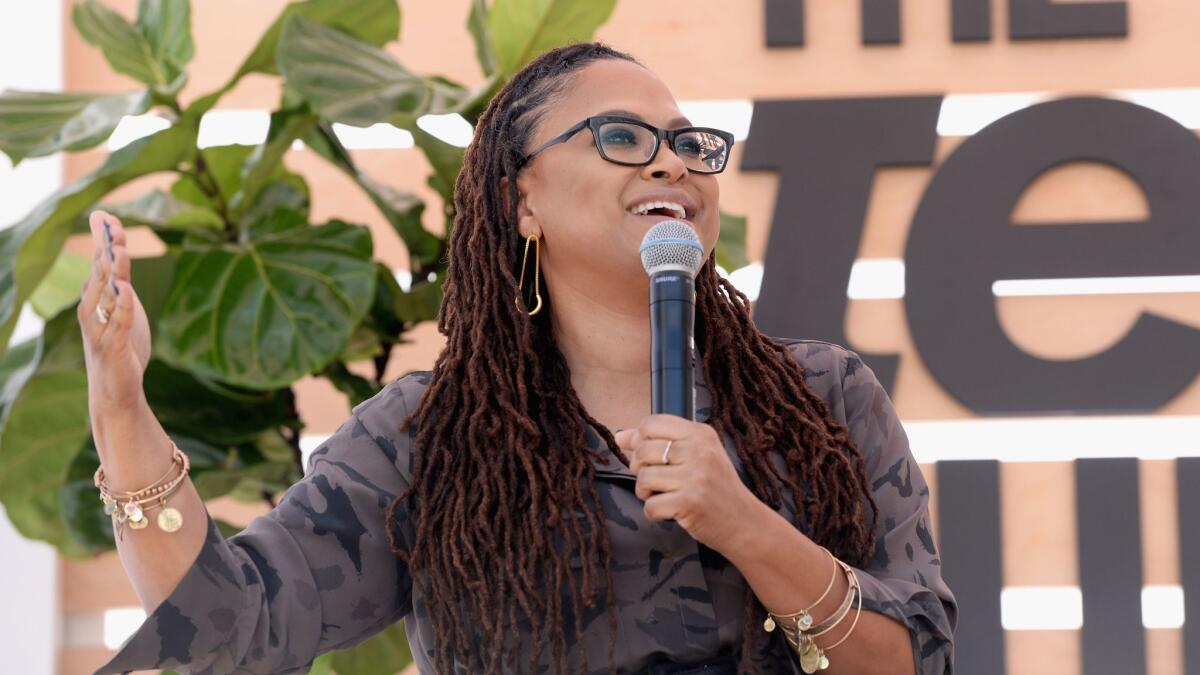Female directors got few opportunities in Hollywood films over the last decade, study finds

Hollywood once again earned dismal marks in USC Annenberg’s annual report card on the number of women and minorities in powerful positions in the entertainment industry.
Professor Stacy Smith and the USC Annenberg Inclusion Initiative found that women made up only 4.3% of all directors of the 1,100 top films released from 2007 to 2017. That represented a ratio of 22 males to each female director. In addition, only four black females, three Asian females and one Latina directed any of those 1,100 films.
“When people think of a female director — it’s a Caucasian female,” Smith said Thursday in an interview. “There were only eight women of color directing those 1,100 films, including only one Latina — that shows something in the system is broken.”
The findings underscore the magnitude of a problem that has come into sharp focus in the last few months as the entertainment industry grapples with its treatment of women. Media companies, production firms and talent agencies are facing growing pressure to correct widespread gender imbalances, which many believe have contributed to an alpha-male culture that allowed sexual harassment to occur unchecked.
Since October, the industry has been roiled by allegations of sexual misconduct by powerful men, including mogul Harvey Weinstein, film producer Brett Ratner, former Amazon Studios chief Roy Price and veteran TV broadcasters Matt Lauer and Charlie Rose.
The USC report titled “Inclusion in the Director’s Chair?” analyzed data on the gender, race and age of 1,223 filmmakers working on 1,100 top-grossing films over the last decade. The picture improved marginally in 2017, when women made up 7.3% of directors of the year’s 100 top movies, compared with 4.2% in 2016.
One of the top-grossing movies in 2017, “Wonder Woman” was directed by a woman, Patty Jenkins.
“That movie was a home run for Warner Bros.,” Smith said. “But there are other women waiting in the queue behind Patty to tell authentic and compelling stories about male and female protagonists.”
Women faced significant hurdles, such as receiving few opportunities to direct more than one film. Nearly 84% of female directors made only one film in the 10-year period covered by the study compared with 55.3% of men.
Age also was a factor. The careers of men spanned six decades, with men beginning to direct films when they were in their 20s and continuing until they were in their 70s and 80s. Women did not enjoy that same longevity, beginning their directing careers while in their 30s and ending by the time they reached 50.
Only 15 women age 50 or older directed movies in the 10-year period, compared with more than 350 men.
“Until major media companies take concrete steps to address the biases that impede hiring, nothing will change,” Smith said in a statement.
Two years ago, the federal Equal Employment and Opportunity Commission launched an investigation into the plight of female film and TV directors but, so far, nothing has come of it. Meanwhile, the Weinstein and other sexual harassment scandals and the #metoo social media movement have heightened awareness of the stark gender imbalance in Hollywood.
The USC report also found that women are underrepresented in the executive ranks as well.
At seven major media companies, about 19% of the board members are female. Four companies — 21st Century Fox, Sony Corp., Comcast Corp. and Lionsgate — each had only one woman on its board. Only 17.9% of the high-ranking executive jobs were held by women.
“We are seeing exclusion across the board,” Smith said.
The study also highlighted the small percentage of black and Asian directors working on major films. Only 5.2% of the 1,223 directors of 1,100 top films were black, and 3.2% were Asian.
UPDATES:
3:20 p.m.: This post was updated to include comments from Smith.
2:20 p.m.: This post was updated to include additional background on the USC study.
This article was originally published at 12:25 p.m.
More to Read
Inside the business of entertainment
The Wide Shot brings you news, analysis and insights on everything from streaming wars to production — and what it all means for the future.
You may occasionally receive promotional content from the Los Angeles Times.











